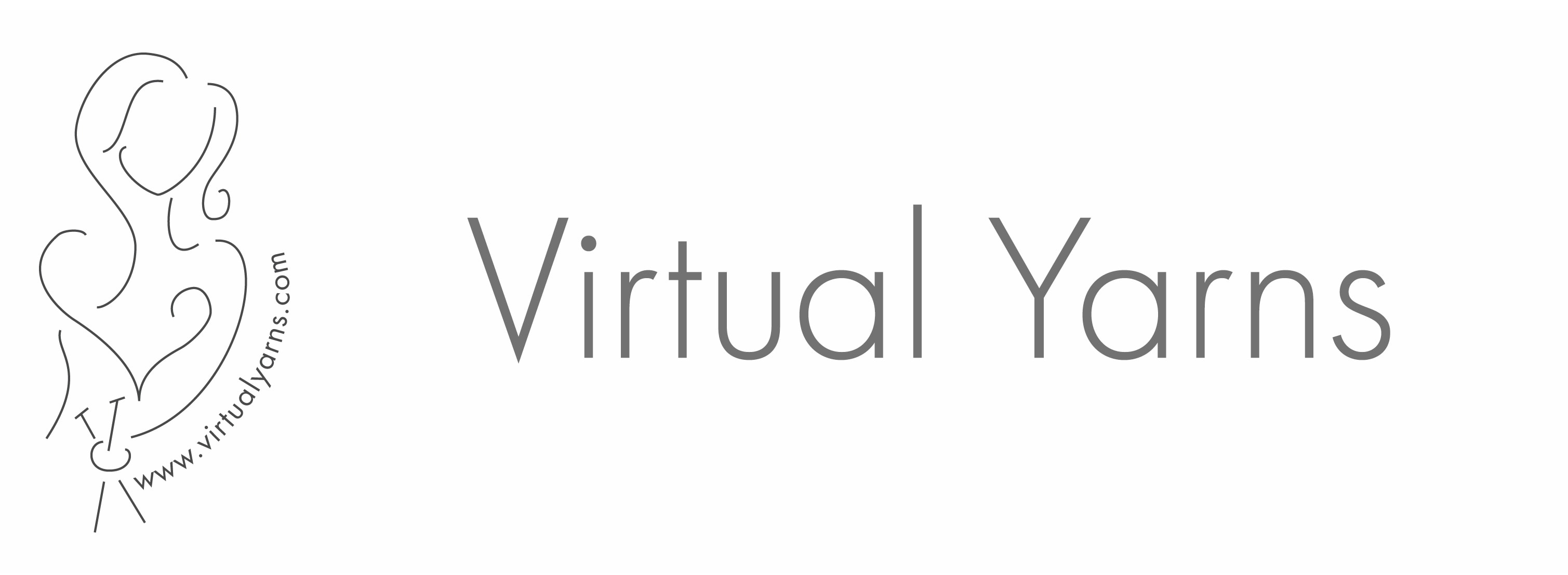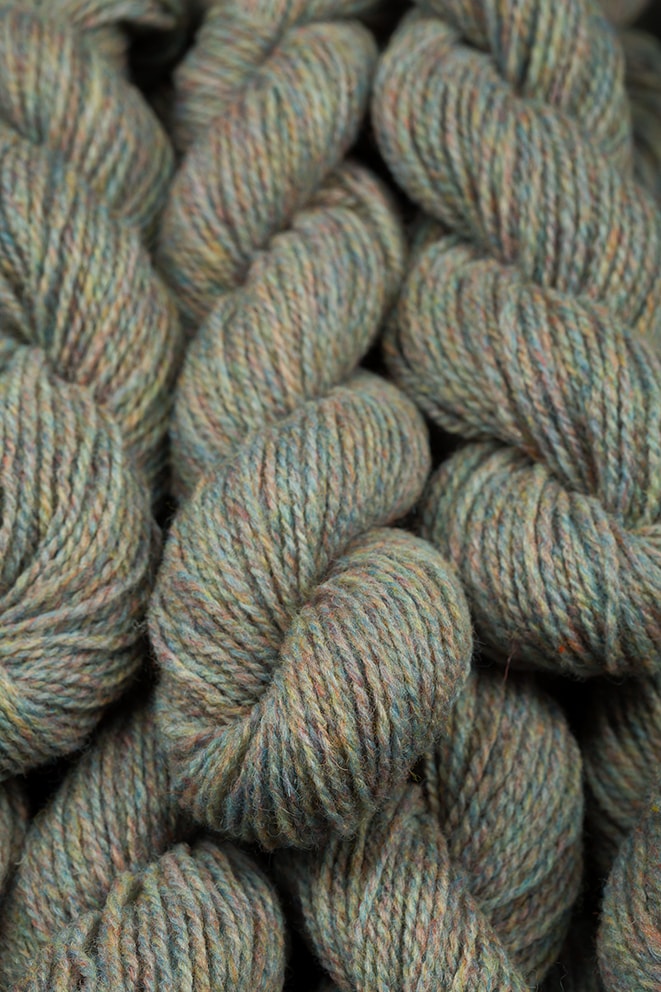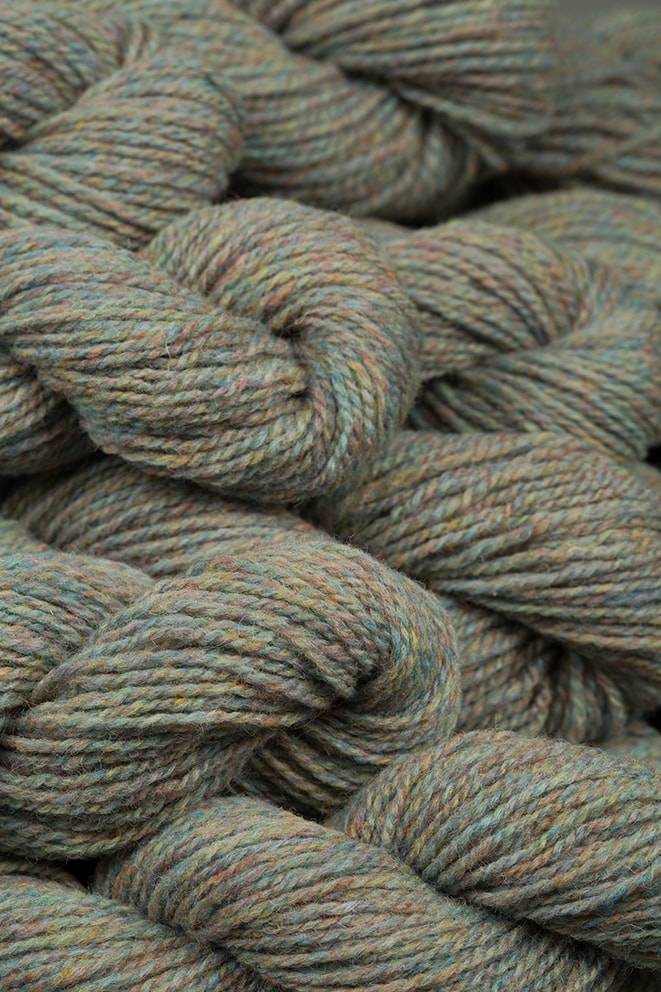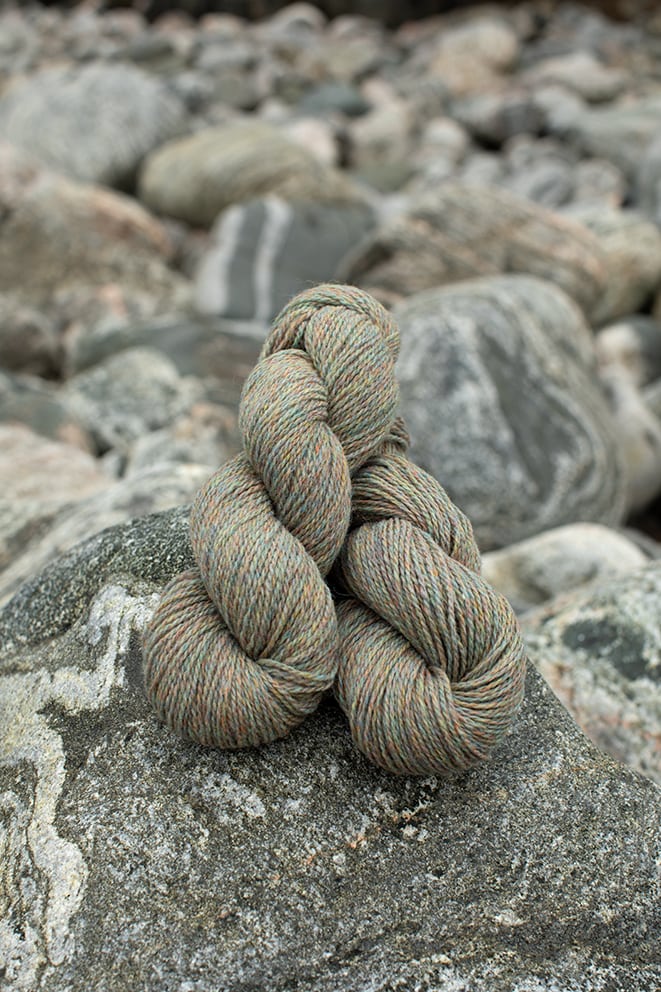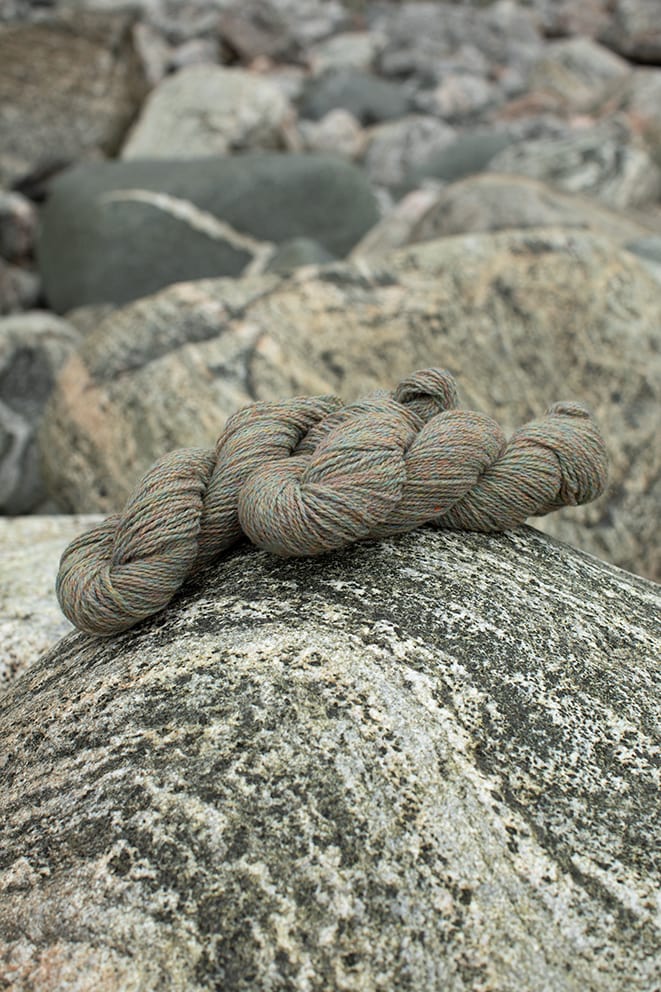Pebble Beach – 50g Hebridean 2 Ply
Description
Alice Starmore Hebridean 2 Ply Yarn is made from premium quality pure new British wool, dyed in the fleece and skillfully blended into unique shades. It is hand-washed and dried in the Hebridean air, and supplied in hand-made skeins which may vary in weight. It is priced per 50g at standard conditions. All yarn is weighed to order on balances that are checked daily to ensure that you receive the correct total amount.
Pebble Beach is part of the Sea & Shoreline range, which is inspired by the Hebridean coast.
Story
The rocks of the Outer Hebrides mainly consist of gneiss, granite and schist of Precambrian origin. Lewisian is the term that geologists bestow on them. Our outwardly simple local geology has many complexities that I try to come to grips with, but I am a long way from becoming even a competent amateur. The designer in me takes over and I tend to admire the colours and textures of the different rocks.
Apart from a few small areas of shale in the uninhabited Shiant Isles, there is only one formation of sedimentary rock in the whole of the Outer Hebrides, and it is right beneath my house. It is a conglomerate known as the Stornoway Formation, covering only forty square miles or so, and consisting of smooth, round pebbles of gneiss in a sandstone matrix. These Stornoway beds are in the form of a series of alluvial fans that were laid down in the Permian and Triassic eras, and my imagination tends to overload when considering the rivers that must have deposited them. They must have been mighty.
Where my croft meets the sea there are low cliffs of this conglomerate, about twenty to forty feet high, so it is possible to view the beds in cross section. I prefer the term puddingstone to conglomerate, for a pudding is exactly what it resembles. The sandstone erodes faster than the gneiss pebbles, which stand out like currents in a pudding. At the very far end of my croft, at a point of land known as Gob Tanga, there is a cave with two mouths to it and a spectacular pebble beach. From a distance this beach is a uniform blue-grey, but scramble down the cliff and there are more colours than you may care to count. Look closer still and there are even more colours – in the form of countless pebbles, each one different. My favourites are what I call the Irish Queen pebbles. Red and green should never be seen, except on an Irish Queen. The green is actually called epidote and the red streaks are haematite. There are many other colours however, including “eggs” of pure white quartz; flecks of different seaweeds, and the occasional bright piece of sea-smoothed glass.
Our Pebble Beach shade is a blend of over thirty colours, warranted different every time you blink.
£8.00
